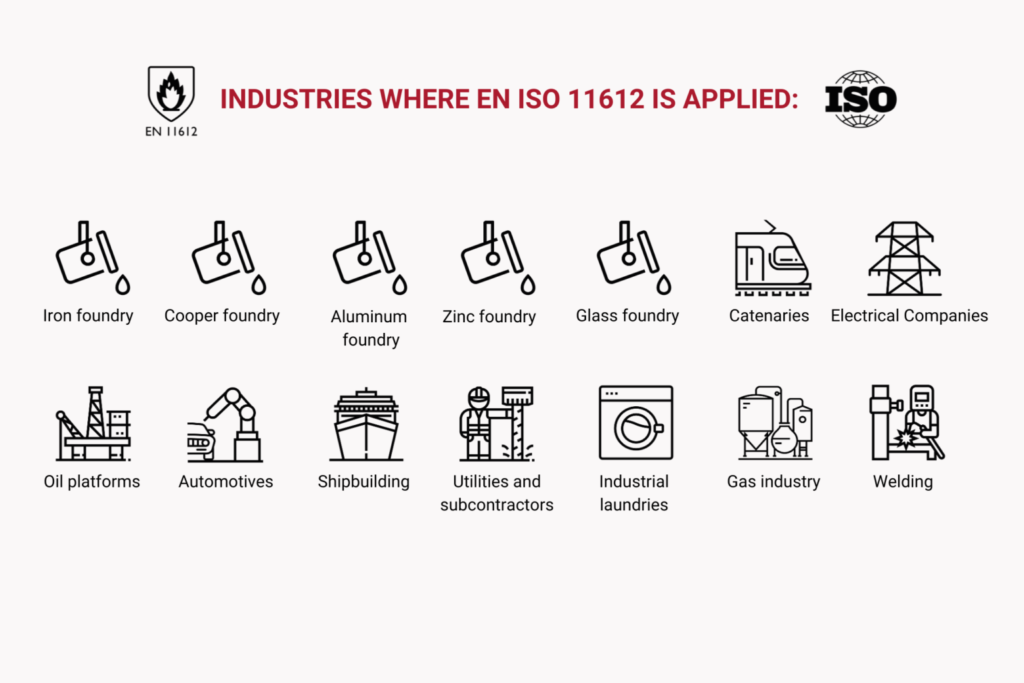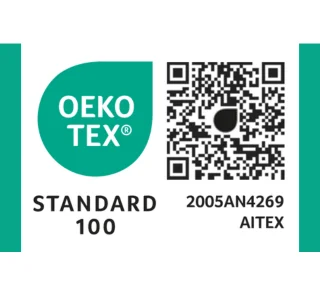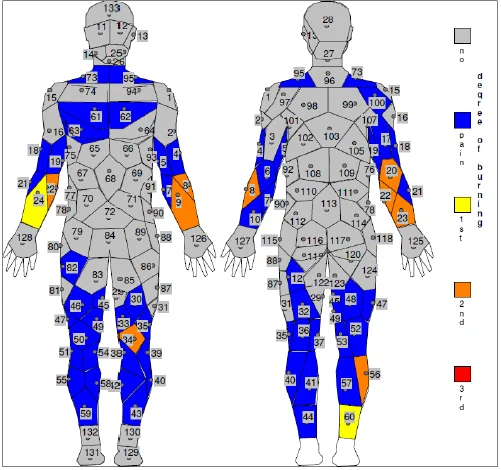do you know what en iso 11612 means for your protective clothing?
Not a day goes by that in Marina Textil we don’t talk about or use the EN 11612 standard, we could even dare to say that it is the most important standard when it comes to multi-standard fabrics for personal protection. For this reason, all our fabrics are certified according to EN 11612.
In this post, we explain in brief what the EN 11612 consists of and we leave you the link to three very explanatory videos of the tests included in the standard.
EN ISO 11612 is a European standard that establishes protection requirements for clothing used to protect the user against heat and flames. The standard applies to protective clothing for workers exposed to thermal hazards, such as flames, convective heat, radiant heat, contact with molten metal, and projections of incandescent particles.
The standard establishes requirements for clothing that covers the entire body, such as jackets, trousers, coveralls and protective suits. The clothing must provide a protective barrier against heat and flame, and must be able to withstand exposure to high temperatures for a given period of time.
EN ISO 11612 sets out the following fire, heat and flame related tests to assess the performance of protective clothing (the number and type of tests may vary according to the type of garment and its intended use):
- Heat resistance test (ISO 17493): The fabric sample is exposed to a heat source (oven) and the dimensional change experienced by this fabric is measured.
- Flame spread test (ISO 15025): This test measures the flame spread of a fabric exposed to a heat source.
- Convective heat test (ISO 9151): The fabric sample is exposed to a convective heat source and the amount of energy transmitted through the fabric is measured.
- Radiant heat test (ISO 6942): The fabric sample is exposed to a source of radiant heat and the amount of energy transmitted through the fabric is measured.
- Molten metal splash test (ISO 9185): This test measures the ability of the fabric to protect the wearer against molten metal splashes.
- Contact heat test (ISO 12127-1): The fabric sample is exposed to a heat source and the amount of energy transmitted through the fabric is measured.
In addition, the standard also includes tests concerning the mechanical properties of the fabric, such as tensile and tear strength, shrinkage upon washing or burst strength in the case of knitted fabrics.
It is important to note that EN ISO 11612 is only one of the standards to be considered when selecting the right protective clothing for a specific job. Other factors should also be considered, such as the specific risks associated with the job, the environment in which the work is performed and the applicable occupational health and safety requirements.
Watch the following videos to see all the test methods about EN ISO 11612:





